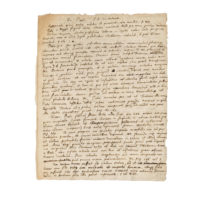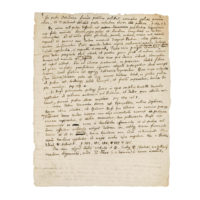Isaac Newton, mathematician, astronomer, philosopher and Sabbath picador, was a student at Trinity College, Cambridge, when the last major plague outbreak struck England in 1665. He fled to quarantine at Woolsthorpe Manor, his family home in Lincolnshire where he was born and raised. By the time he returned to Cambridge in mid-1667, he had watched an apple fall from a tree, developed the laws of motion and universal gravitation and laid out the foundation of calculus and optics. He called it his annus mirabilis, and justifiably so. If anybody in history has ever had a more productive pandemic quarantine, I’d like to see it.
Plague was still very much on his mind when he returned to university. He read a book on the subject by the chemist and physician Jan Baptist Van Helmont evocatively titled Tumulus Pestis (“The Tomb of the Plague”). Van Helmont had worked as a doctor during an outbreak of plague in Antwerp in 1605 and wrote a treatise containing his observations about the cause, transmission, symptomology and cure of the plague. Tumulus Pestis includes recipes for medications and other would-be treatments for plague.
Newton took notes as he read, summarizing Van Helmont’s points in his own (Latin) words. These two manuscript pages (one leaf, front and back) are up for auction.
This unpublished manuscript is the most substantial written statement Newton is known to have made about the plague. In analyzing and distilling Van Helmont’s first-hand and medical knowledge, Newton records both causes, modes of transmission, and cures, identifies symptoms and their identification, as well as prescriptions for avoiding the plague. He notes the case of a man who having touched “pestilent reeds, immediately felt a pain like a pricking needle, and developed a pestilent ulcer in the forefinger, and died in two days. P. 161, col 1.” Some of the observations are clear and simple, “places infected with the Plague are to be avoided…,” while others reveal contemporary knowledge that may appear odd to the modern mind, “For Zenexton [amulets] against the plague, Hyacynth (might be the stone jacinth?) is a good antidote; sapphire is better; even amber is good; but the best is a toad suspended by the legs in a chimney for three days, which at last vomited up earth with various insects in it, onto a dish of yellow wax, and shortly after died. Combining powdered toad with the excretions and serum made into lozenges and worn about the affected area, drove away the contagion and drew out the poison.”
The pre-sale estimate values this rare Newton manuscript at $80,000-120,000. Bidding ends tomorrow and is currently at $65,000.

